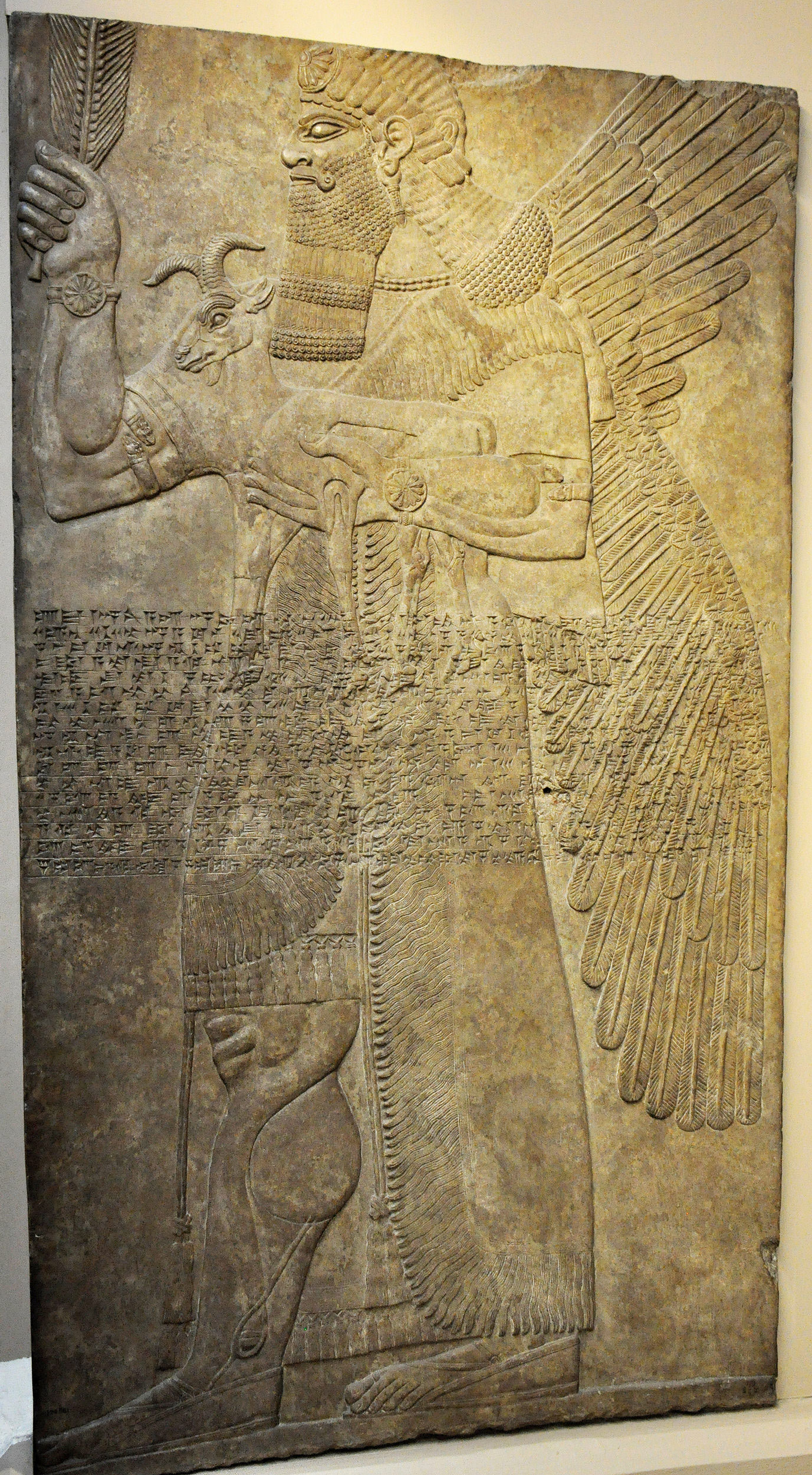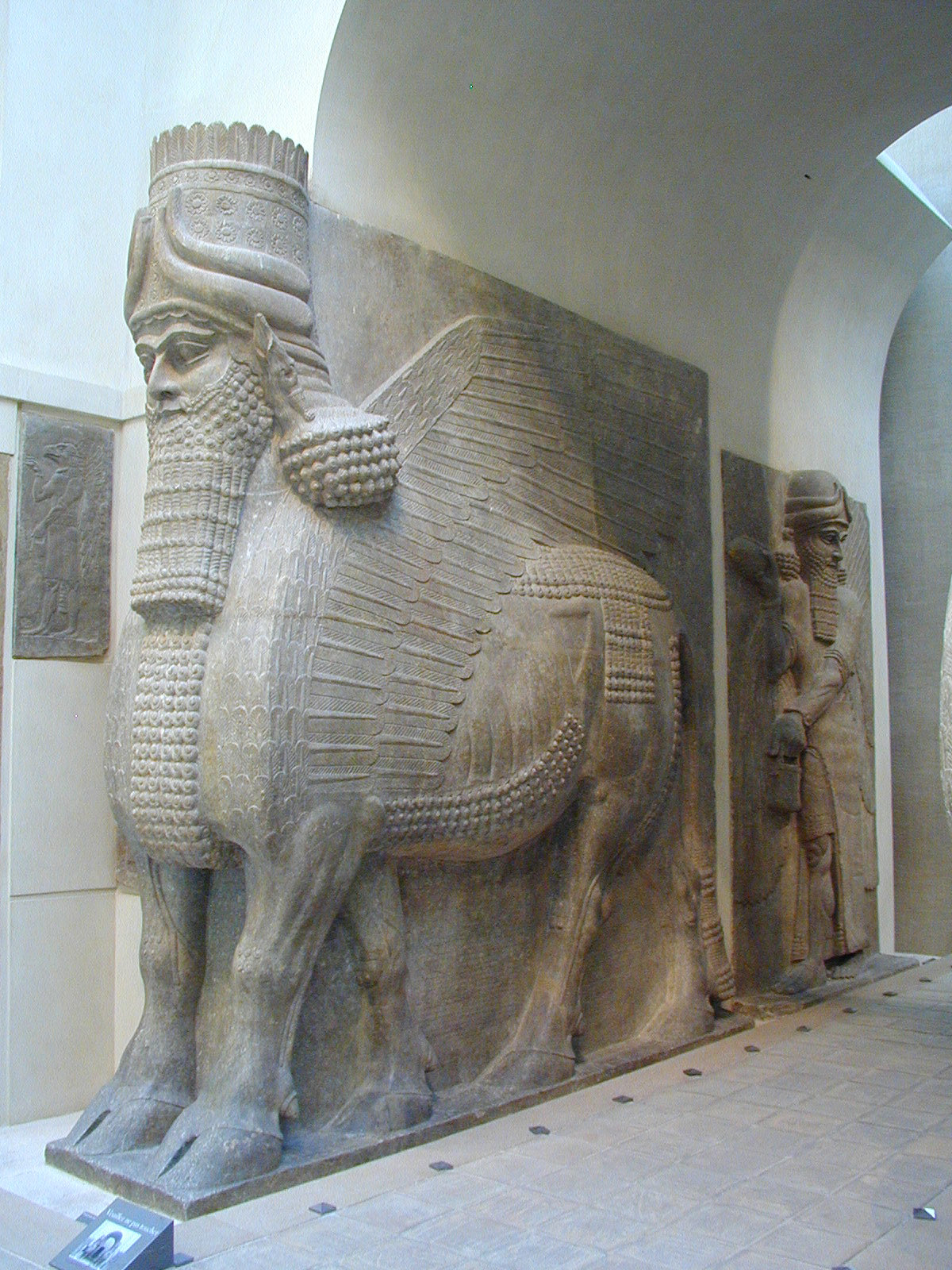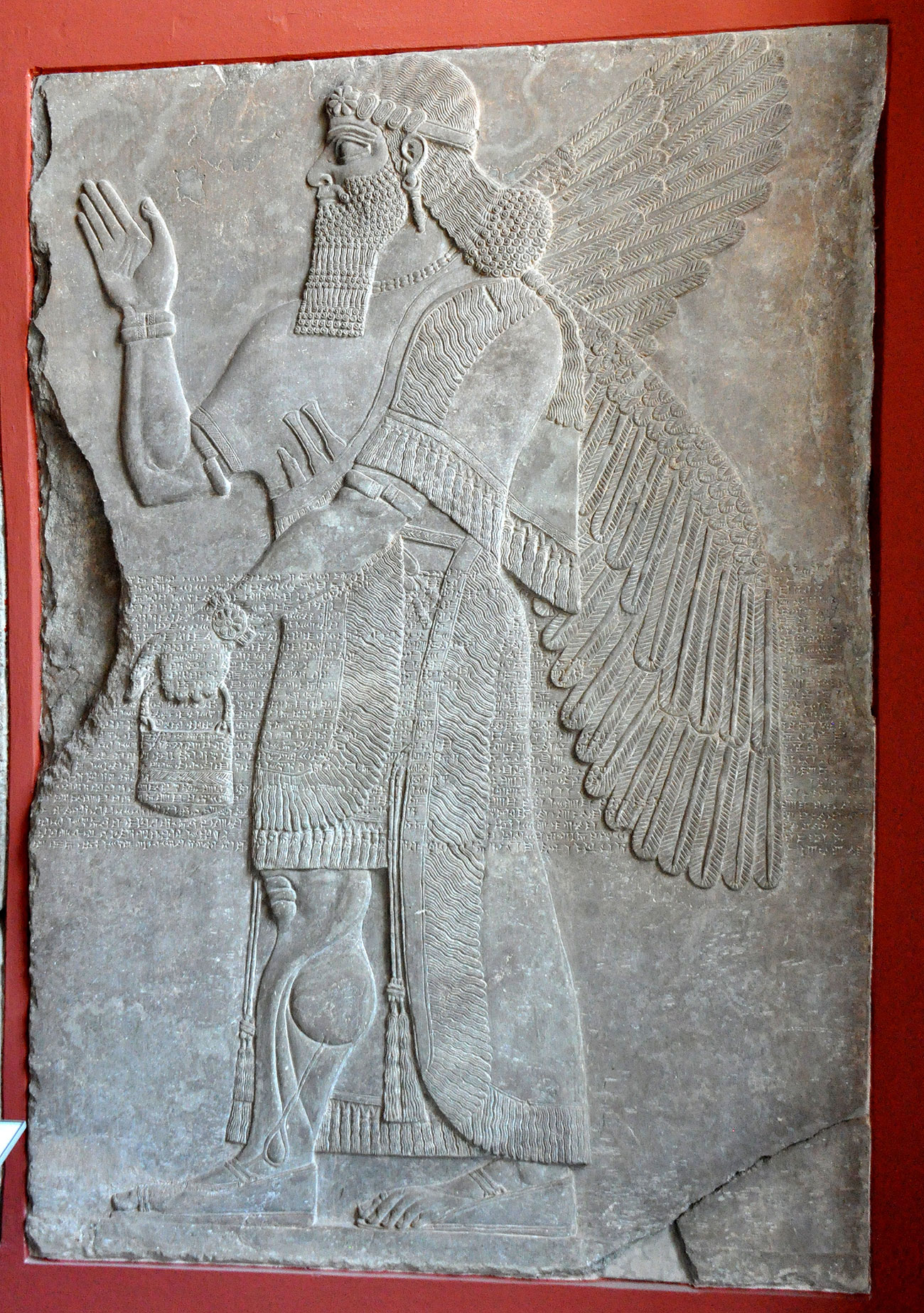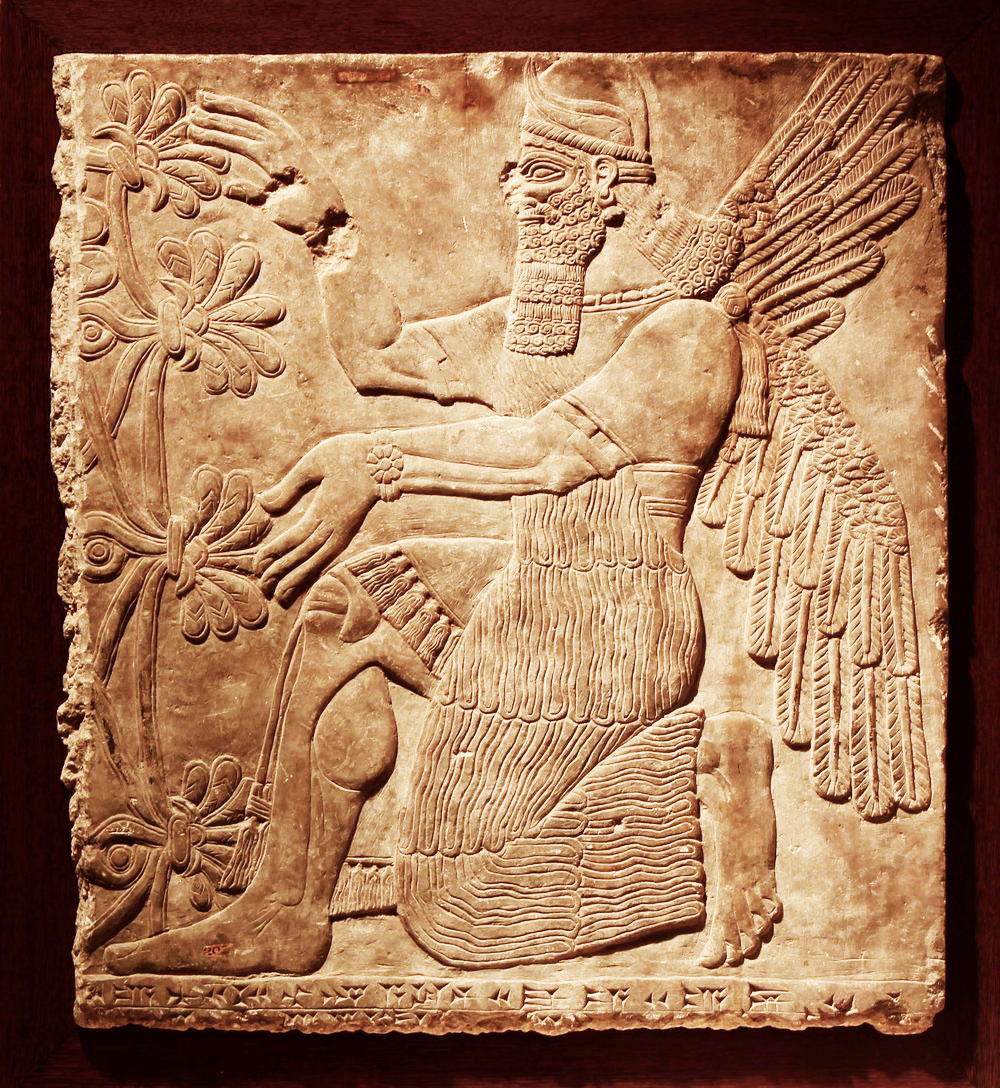 |
READING HALLTHE DOORS OF WISDOM |
 |
CAMBRIDGE ANCIENT HISTORY. EDITED BY J. B. BURY - S. A. COOK - F. E. ADCOCK : VOLUME III |
|
THE ASSYRIAN EMPIRE- TABLE OF CONTENTS |
|
Colossal statue of a winged lion from the North-West Palace of Ashurnasirpal II |



This gypsum wall panel came from the North-West Palace of Ashurnasirpal II (883 - 859 BCE) at Nimrud. The so-called "Standard Inscription" of Ashurnasirpal II runs horizontally across the lower part. The king wears a diadem and holds a bucket in his left hand; the right arm is raised in salutation or prayer gesture. He also wears a below-knee length kilt and a fringed robe. The depicted man may also represent a crown prince. From the North-West Palace at Nimrud, in modern-day Ninawa Governorate, Iraq. Neo-Assyrian period reign of Ashurnasirpal II (883-859 BCE). On display at the Iraq Museum in Baghdad, Republic of Iraq. |

This gypsum wall relief depicts a typical Assyrian lion-hunting scene. King Ashurnasirpal II stands in his royal chariot and shoots at a leaping wounded lion. Two royal attendants, behind the wounded lion, holding their shields and daggers, are ready to intervene at any moment. A dead or dying lion appears beneath the chariot's horses. Neo-Assyrian Period, reign of Ashurnasirpal II, 865-860 BCE. Panel 19 of Room B (Throne Room) at the NorthWest Palace, Nimrud (Kalhu), Mesopotamia, modern-day Iraq. (The British Museum, London) ANCIENT HISTORY ENCYCLOPEDIA |
Sculpted reliefs depicting Ashurbanipal, the last great Assyrian king, hunting lions, gypsum hall relief from the North Palace of Nineveh (Irak), c. 645-635 BC, British Museum |
